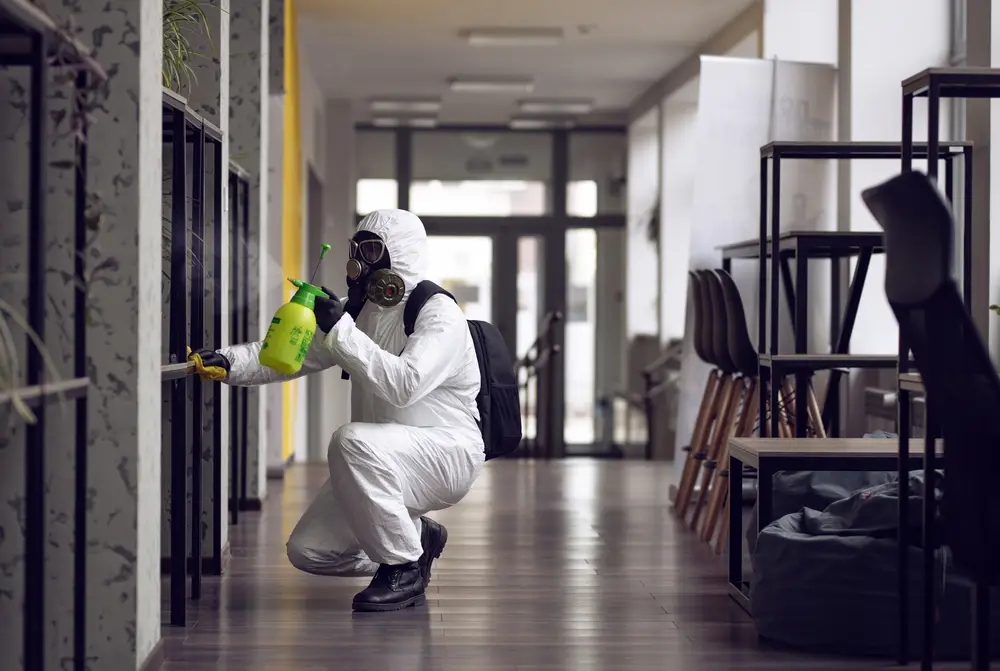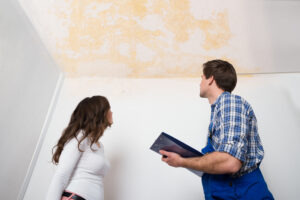Imagine this: Amid your office deadlines and meetings, a silent intruder goes unnoticed, potentially harming your health and productivity. We’re talking about mold—the inconspicuous menace that thrives in damp, dark corners and can wreak havoc on your workplace.
Despite Utah’s relatively dry climate, mold can flourish wherever there’s excessive moisture. The US Environmental Protection Agency states that inhaling or touching mold spores can trigger allergies and hay fever-type symptoms like sneezing, rashes, and watery eyes. Molds can also cause asthma attacks, which could be serious if not properly addressed.
Beyond health concerns, mold can significantly impact productivity. A recent World Green Building Council study indicated that poor air quality, often due to mold contamination, can lead to reduced cognitive function. This hazard can hinder employees’ focus, reducing work output.
Given these significant risks, addressing workplace mold problems is more than aesthetics; it’s critical for a healthy and thriving environment.
How to Spot Mold in Your Workplace in 5 Simple Ways
Mold may be silent, but a forewarned office with sharp senses won’t overlook its presence. As an office owner in a dry state like Utah, where mold might not be a primary concern, staying alert is imperative to ensure your employees’ health and productivity.
1. Look for visible signs of mold growth
Keep an eye out for those telltale signs—black, green, or white spots that crop up on walls, ceilings, floors, carpets, and furniture. These visual cues are often indicators of mold colonies taking root. These spots can flourish if you leave them unchecked.

2. Smell for musty or unpleasant odors
Your nose knows! Especially in high humidity or water-damaged areas, mold’s musty or earthy scent is distinct. Mold releases microbial volatile organic compounds (mVOCs) into the air, causing headaches, nausea, and irritation. If you detect these odors, it’s time for further investigation.
3. Check for water leaks or moisture problems
Utah’s varying weather can lead to water leaks or moisture infiltrating your office space. Look for stains, discolorations, peeling paint, warped wood, or damp surfaces—conditions that foster mold growth. If you identify these indications without detecting mold, you can proactively address the problem before it starts.
4. Monitor for health symptoms linked to mold exposure
Prioritize your employee’s health. Allergic reactions, respiratory issues, skin rashes, and eye irritation could indicate mold exposure. You must note that some individuals might be more sensitive to mold, and certain molds can be more toxic. Your staff’s well-being should be your utmost concern.
5. Test for mold using professional services
When in doubt, call the experts. Professional mold removal services can accurately detect mold, providing actionable advice. Alternatively, explore DIY mold testing kits that identify mold spores in the air or on surfaces. Each method has pros and cons, so weigh them against your needs.
5 Effective Mold Removal Tips for Your Office
When confronted with the daunting presence of black mold in the office, knowing how to get rid of mold in the office becomes essential. Here are some practical steps to tackle mold removal and prevention.
1. Use a mild detergent and water solution for small areas of mold growth
For those smaller mold patches, create a mixture of mild detergent and water. Wear protective gear like gloves, masks, and goggles as you clean. Once you’ve finished, seal moldy materials in plastic bags before disposal to prevent further contamination.
2. Ventilate the affected area
Proper airflow is your ally. Open windows for fresh air and use fans to encourage circulation. Dehumidifiers and air conditioners are valuable tools for reducing moisture levels, a crucial component in preventing mold growth. Regularly replace air filters and clean ducts to maintain clean, mold-free air.
3. Fix water leaks or plumbing issues promptly
Address water issues at the source. If you spot leaks or plumbing problems, tackle them immediately, as dampness provides an ideal environment for mold growth. Swiftly drying wet areas within 24 to 48 hours is vital to thwart mold development. Seal cracks and gaps using waterproof materials or coatings to prevent future moisture intrusion.
4. Seek medical attention for severe or persistent health symptoms
For severe or persistent health symptoms due to mold exposure, prioritize safety. If possible, relocate to a mold-free area or use a respirator. Consult a doctor before trying over-the-counter medications to address symptoms.
5. Follow the instructions and safety precautions of your chosen mold testing service
When seeking professional help, follow the guidance of your selected mold testing service. Accurately interpret the results and take recommended actions based on findings. Your chosen experts will skillfully lead you through the mold removal process.
Breathing Easy: A Mold-Free Office
Breathing easily within your workspace is a testament to your commitment to a healthy and thriving environment. Early detection and prevention are the solutions to protecting your team from the invisible threats of mold.
All Dry is ready to transform your office into a mold-free haven. Our commercial restoration services, including all types of water damage repair in Utah, can ensure your peace of mind.
Don’t wait—act today! Contact us for unparalleled restoration and remediation services.





